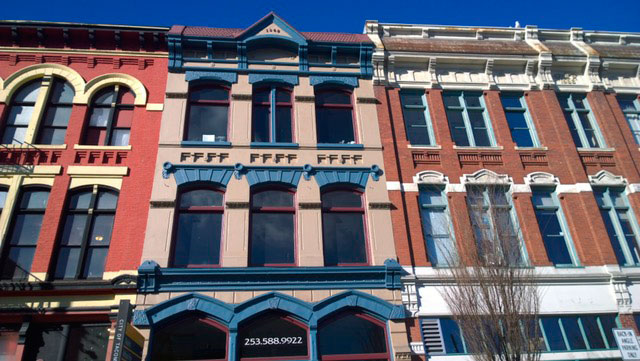By Morf Morford
Tacoma Daily Index
In 1890, everything was analog. They didn’t use the term back then, of course, but in 1890 the world was made of wood, leather and iron – and human grit and determination.
The late 1800s were a time of extreme innovation and exploration – rail travel opened the world and was literally a working definition of civilization.
Here is a short list of the inventions that rocked the end of the 19th Century; residential use of electricity, recorded music (first on wax cylinders, then records) denim jeans, photography, radio (invented by Nikola Tesla), the telephone, the light bulb and toilet paper, pasteurization, the fountain pen, motion pictures, the typewriter and paper clips.
And, of course, the automobile, and the assembly line that allowed its (relatively) affordable construction.
So many things were invented that a rumor took hold that “everything that can be invented has been invented.”
In a sense that was true – for the first time in human history, technology was reaching beyond the human reach, the human touch, the human pace.
The basic element of construction – the simple brick, was the perfect size and weight for the human hand, but thanks to the introduction of cranes and other construction equipment, the human hand, or even human tolerances for weight, toxicity or heat was suddenly irrelevant or even obsolete.
Master craftsmen were no longer needed – factory workers were hired to tend machines. Skill was no longer necessary.
Traditional agriculture, in fact traditional everything, was in a state of transition. It was the age of the machine, the age of steam and steel, the age of the city.
“Steampunk” is a modern term, but that was the world everyone lived in – the world before plastics, mass production and computers.


was founded in 1890 Photo: Morf Morford
It was a world of transition, a world where nothing stood still, a world where empires and fortunes could be gained and much could be lost.
Every human creative act became replaced by, or magnified by a machine – and it was usually a machine whose workings were visible. This was before machines and mechanistic processes took place in a “black box” hidden from human eyes and interference.
Nothing, at least by our standards, was fast, but everything was getting faster.
Everything that had seemed impossible, for literally all of human history, suddenly seemed possible. The steel rail which guided the railroads also connected communities, sped up communications (cross-continental rail lines meant the end of the much more romantic Pony Express) and allowed expansion and development across all of North America.
Thanks to rail and the oncoming use of paved roads and automobiles, horses would also become economically obsolete – and would become more of a luxury than a necessity.
With rail travel, other forms of travel suddenly seemed within reach; global travel, space exploration, even time travel.
And if it wasn’t yet technologically possible, an emergent genre of fiction – science fiction – was ready to invent it. Utopias – and dystopias – seemed to fill every horizon. Jules Verne and H. G. Wells, among many others, set the stage for the science fiction, fantasy and superheroes that dominate our pop culture still.
Sherlock Holmes was first published in 1891 and set the parameters of modern mysteries (and has had multiple sequels and iterations since then).
This was the world Tacoma was born into – a world brimming with possibilities, fraught with untold potential and indescribable catastrophes – a world where it made sense to tag a word like “destiny’ to a burgeoning city.
We use the term “real time” to describe a depiction of events that takes place at the same time as the event, without compression, delay or interference. In the late 19th Century, that was the world everyone lived in – and seemed eager to leave behind.
Consider these key characteristics of life on planet earth in the late 19th Century as humans, literally for the first time in history, prepared to leave them behind:
All music was live
Not a single piece of plastic existed on the face of the earth
Electricity was new, not always available, dangerous and expensive
Steam powered everything from factories, railroad trains to homes
The vast majority of food was home grown or prepared
Virtually nothing was recorded – except on paper
Those who were literate would write almost everything by hand – in cursive
Almost every machine could be understood, if not maintained, by a person of average ability and intelligence
Roads were populated by horses, carriages, bicycles and more, with modern paved freeways years, if not decades, away
That was the national, if not international scene.
Life in Pierce County and Puget Sound was not much different.
Tacoma was incorporated in 1875. Washington became a state in 1889.
Even then, the greater Tacoma-Seattle area was seen as a harbinger of what was to come. Rudyard Kipling visited the Pacific Northwest at roughly the same time as John Muir and Mark Twain – the early and mid-1890s.


The Gold Rush generated many “boom towns” – towns that came and went with the discovery and depletion of gold or silver. Tacoma’s “lode” was not gold or silver, but a more enduring commodity – timber. As Rudyard Kiplng put it “Tacoma was literally staggering under a boom of the boomiest.”
As other major cities suffered destructive fires, San Francisco and Seattle in particular, Tacoma was there with the lumber to rebuild them.
The great Seattle fire hit in 1889 and a major economic depression wracked the entire country in 1893.
If you look closely at many of the historic buildings in Seattle, Tacoma and Port Townsend, you will see many dated 1889, ’90, ’91 or ’92.
Construction almost completely stopped with the depression of 1893.
As the economy stalled, people left. From 1893 to 1900, the population of Pierce county dropped by 30 percent.
The greater Puget Sound region has grown and stabilized since then and the Tacoma Daily Index has been there through it all.
The Tacoma Daily Index, founded in 1890, may not be widely known, but it has outlived far larger papers in both Seattle and Tacoma and has been around longer than Tacoma’s Old City Hall (1893), Stadium High School (1891) and the Pythian Temple (1906).
The Tacoma Daily Index has recorded and published the minutia of permits, licenses, property sales and exchanges, new businesses and foreclosures for all those years – and, presumably, many more.
Technology, fads and entire industries come and go, but the Tacoma Daily Index, perhaps kind of like Tacoma itself, keeps quietly plugging along.








